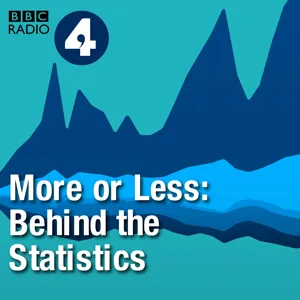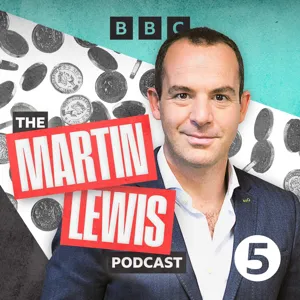Podcast Summary
Council tax disparity due to outdated property valuation system: Residents in expensive properties pay less council tax than those in less expensive homes due to 1991 property valuation system
Despite having significantly different property values, residents in some areas pay less council tax than those in other areas due to the outdated property valuation system used for council tax. For instance, a property worth £8,000,000 in Westminster would pay less council tax than a property worth less than £1,000,000 in Hartlepool, which is in a higher council tax band. This disparity exists because the property values used to determine council tax bands were set in 1991, and the system has not been updated since then. Consequently, some residents with expensive properties pay less council tax than those with more modest homes.
Council Tax System in the UK: Unfair and Arbitrary: The council tax system in the UK, designed with a regressive structure, unfairly benefits councils with lower average property values, resulting in uneven distribution of tax burden.
The council tax system in the UK, as discussed with Kate Ogden from the Institute for Fiscal Studies, has significant unfairness and arbitrariness. The system, which replaced the poll tax in 1993, was designed with a regressive structure, meaning that properties worth much more pay only three times the council tax of those worth less. This issue has been exacerbated due to the uneven increase in property values across different regions since the 1991 valuations. Westminster, specifically, is an outlier with the lowest council tax bills in England, while Hartlepool, on average, has higher bills. The fundamental point is that council tax does not fairly represent the value of a property, and the system benefits councils with lower average property values, such as those in London. The council tax raises only 4% of the total tax take in the UK and is just a part of the overall tax system. However, the numbers suggest that there are some very curious features in the council tax system that warrant further examination.
UK Population Growth Projected to Increase by 10% Due to Migration: The UK's population is projected to grow by nearly 10% over the next 15 years, primarily due to migration, with the ONS using an average net migration rate of 315,000 per year as a basis for future assumptions
The UK's population is projected to increase by nearly 10% over the next 15 years, with almost all of this growth coming from migration. The Office for National Statistics (ONS) sets assumptions for population growth based on fertility, mortality, and migration, using expert advice and past data. For migration, the ONS used the average net international migration over the last 10 years, which was 315,000 per year. This assumption was chosen over a longer time period due to the recognition that the world has changed significantly in recent years and a shorter time series provided a more representative basis for future assumptions. This rate of population growth through migration is not unprecedented, but the fact that it is driving the majority of the population change is new.
Projected UK Population Growth: 90% from Net Migration, 10% from Natural Change: In the next 15 years, 90% of UK population growth is projected to come from net migration, while only 10% is expected from natural change.
Over the next 15 years, over 90% of the UK's population growth is projected to come from net migration, with less than 10% from natural change. This is a significant shift from the last 25 years, where net migration accounted for around 60% of the total population change, and natural change accounted for 40%. The current population change levels are not drastically different from recent decades, but the drivers of those changes are. It's important to note that these projections are based on current trends and assumptions, and future events could impact migration numbers. For instance, the increase in international students and the impact of the war in Ukraine on migration are not expected to continue indefinitely. However, there is a possibility that high levels of net migration could continue if the UK continues to import large numbers of care workers. Looking back at the long-term view, net migration to the UK was negative from the 1960s to the 1970s due to British citizens leaving the country. It was only in the 1980s and 1990s that net migration became consistently positive, with a significant increase around the time of EU enlargement. While people often focus on immigration from other countries, it's important to remember that emigration of British citizens has also been a significant historical phenomenon.
The Costs of Junior Doctor Strikes and Pay Rises in the NHS: The estimated cost of a 35% pay rise for junior doctors in the NHS is around £1.8 billion annually, while the cost of strikes, including the hiring of consultants to cover for absent staff, is over £1.5 billion, but the exact figures and breakdowns are uncertain due to limited information and the inclusion of various staff groups in the strikes.
While the cost of giving junior doctors a 35% pay rise in the NHS is estimated to be around £1.8 billion annually, the cost of strikes, including the hiring of consultants to cover for junior doctors, is estimated to be over £1.5 billion, but the exact figures and breakdowns are uncertain due to limited information and the inclusion of various staff groups in the strikes. For consumers looking for affordable and durable furniture, Quinn's offers free shipping and returns at quince.com/upgrade. Burrow's modular seating is built to last and grow with you, with easy assembly and disassembly, and fast free shipping. In the news, the cost of junior doctor strikes and the potential cost of a 35% pay rise for junior doctors in the NHS has been a topic of interest. A rough estimate puts the cost of the pay rise at around £1.8 billion annually, while the cost of strikes, including the hiring of consultants to cover for junior doctors, is estimated to be over £1.5 billion, but the exact figures and breakdowns are uncertain due to limited information and the inclusion of various staff groups in the strikes. The British Medical Association puts the cost of the pay rise at £1 billion, after accounting for increased taxation and national insurance. The cost of strikes includes not only junior doctors, but also nurses, radiographers, and consultants. While the exact figures are uncertain, it's clear that both the pay rise and strikes come with significant costs for the NHS.
Junior doctor strikes in NHS might have hidden costs: The true cost of junior doctor strikes could exceed £1.2 billion, including consultants' premium pay and canceled appointments.
The true cost of the junior doctor strikes in the NHS might be higher than the estimated £1.1 to £1.2 billion, as the cost of paying consultants to cover for the striking junior doctors at a premium is likely to be significant. Additionally, the costs of canceled appointments, missed operations, and the impact on relationships and trust are not included in this estimate. The research published in the Telegraph suggesting that growing vegetables at home has a carbon footprint five times greater than conventionally grown produce also warrants further investigation, as it challenges common assumptions about sustainability. The carbon footprint of urban agriculture, including allotment gardens, was found to be significantly higher than conventional agriculture in a recent study, due to factors like energy use for heating greenhouses and transportation of supplies. However, it's important to note that the situation is more nuanced than the initial headline suggests, and further research and context are necessary to fully understand these complex issues.
Gardening's Carbon Footprint: Though gardening in your backyard may seem eco-friendly, the infrastructure needed can contribute to carbon emissions. However, 25% of allotment gardens are carbon competitive with conventional agriculture. To minimize gardening's carbon footprint, use existing materials, avoid new structures, and focus on social benefits.
While growing food in your backyard may seem like a carbon-neutral or even negative activity, the infrastructure required, such as raised beds, garden sheds, and tools, can actually contribute to carbon emissions. This is due to the economies of scale in industrial agriculture, which allow for larger-scale production with less carbon investment per unit of food. However, the study also found that 25% of allotment gardens were carbon competitive with conventional agriculture. To minimize the carbon footprint of gardening, consider using existing materials for paths and raised beds, avoiding new structures like sheds, and focusing on the social benefits of gardening rather than just the food production. While the carbon impact of gardening is relatively minor compared to larger contributors to climate change, it's still important to be mindful of these factors.
Exploring the importance of flexibility in personal lives and insurance coverage: BBC paid tribute to Adele Groyer's informative, calm, and empathetic commentary during the pandemic. Professor Ben Ansell emphasized the importance of protecting democracy for future generations. UnitedHealthcare Insurance Plans offer flexible, budget-friendly coverage for various needs.
Flexibility is important, whether it's in our personal lives through practices like yoga, or in our insurance coverage. The BBC program "More or Less" paid tribute to Adele Groyer, a regular contributor during the pandemic who passed away too young from cancer. Her colleagues praised her informative, calm, and empathetic commentary. In the 2023 BBC Reith Lectures, professor Ben Ansell explores the importance of protecting democracy for future generations. Meanwhile, UnitedHealthcare Insurance Plans offer flexible, budget-friendly coverage for medical, vision, dental, and more, making it a valuable option for those in need of flexibility. The program ended with the introduction of the 2023 BBC wreath lecturer, professor Ben Ansell, who emphasized the importance of democracy as a legacy and obligation for future generations.





